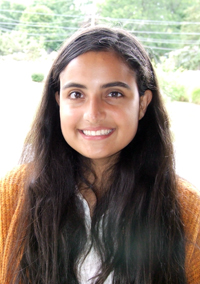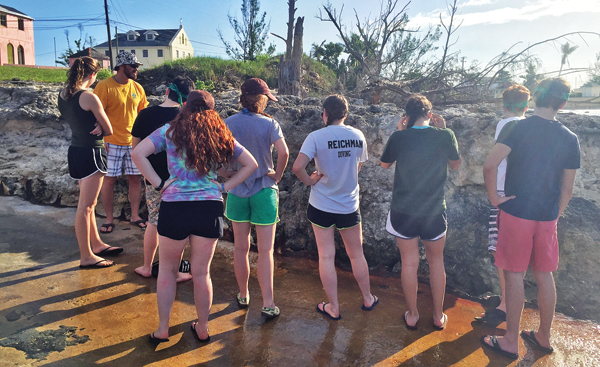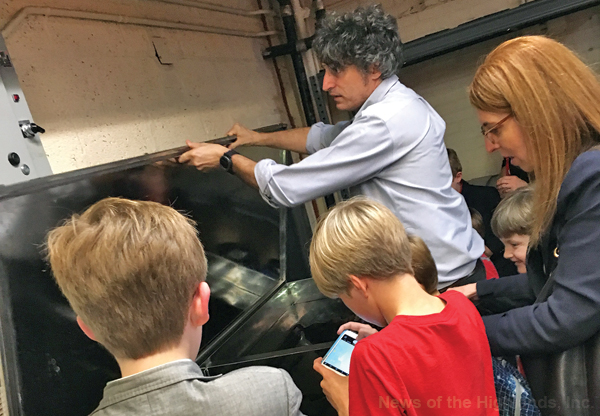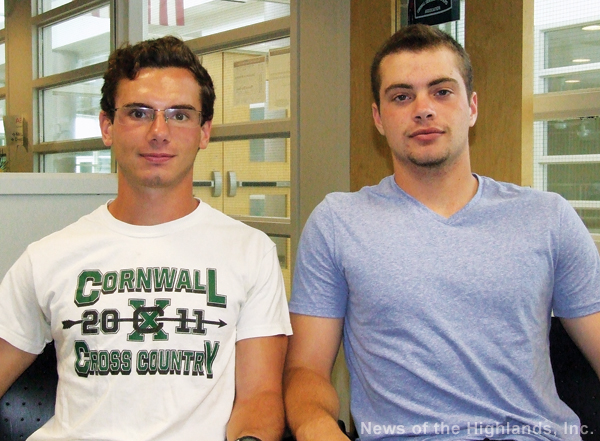
Three dozen top science students from around the world gathered for a summer program at the University of Colorado Boulder. One of them was Naunet Leonhardes-Barboza, a senior at Storm King School.
The students used a research-grade telescope to take images and calculate the orbital path of an asteroid, as well as predict its chances of impacting the Earth in the future.
“I wanted to do something cool with my summer and I wanted to do science for college,” said Leonhardes-Barboza, who learned about the program on the internet. “I like astromony, so it kind of just worked out.”
Since openings were limited, Leonhardes-Barboza had to fill out an application as if she were applying to college. She had to submit a teacher’s recommendation, grades, write essays, and provide other supplemental information.
“I was over the moon (pun intended) about it,” Leonhardes-Barboza said of receiving a confirmation e-mail indicating she was accepted into the program. “I was so happy. I didn’t think I was going to get in. ”
The 39-day program began June 23 and ended Aug. 1.
Daily activities included math and science lectures. Leonhardes-Barboza described it as a fire hose of information that was needed to track an asteroid. The students learned computer coding, had visits from guest lecturers, and attended science museums.
Most of the subjects were new to Leonhardes-Barboza, but she thought the instructors did a great job teaching the material.
Her favorite part, was operating a research-grade telescope. She was part of a team that had to locate and track one of six asteroids.
“We had to learn how to use the tracking system and how to navigate to find our asteroid,” Leonhardes-Barboza said. “It’s similar to latitude and longitude but it’s right ascension and declination. That’s how you find whatever celestial object you’re looking for using a telescope.”
The students learned the capabilities of the telescope and how it collects photons to take black and white, RGB (red, green, blue), and gas filtered images.
Trying to locate the asteroid was difficult because everything shows up as white dots of various sizes through the telescope. Leonhardes-Barboza said asteroids appear dimmer because they collect fewer protons than stars. Scanning multiple photos at the same time, like a flip book, also helps locate the asteroid because it moves among the stationary stars.
Once they located the asteroid, Leonhardes-Barboza’s group had to determine
-its shape,
-orbit,
-distance from the Earth.
-angle in relation to the planets and the sun,
-how fast it was traveling, as well as other characteristics about its movement.
From there, the group used 3D plotting to determine where it would land. The asteroid, located between Mars and Jupiter, is predicted to strike the largest planet in our solar system, but not in our lifetime.
Finally, each group had to write a paper documenting their findings. The reports had to analyze for errors, any uncertainties the group had, as well as any issues with the process taught to gather the information.
“If you want to be a real scientist you have to talk about the uncertainties so that people know how valid and reliable your data is, as well as your results and your conclusions,” said Leonhardes-Barboza, who is planning to study astro physics in college and become a research scientist one day.



